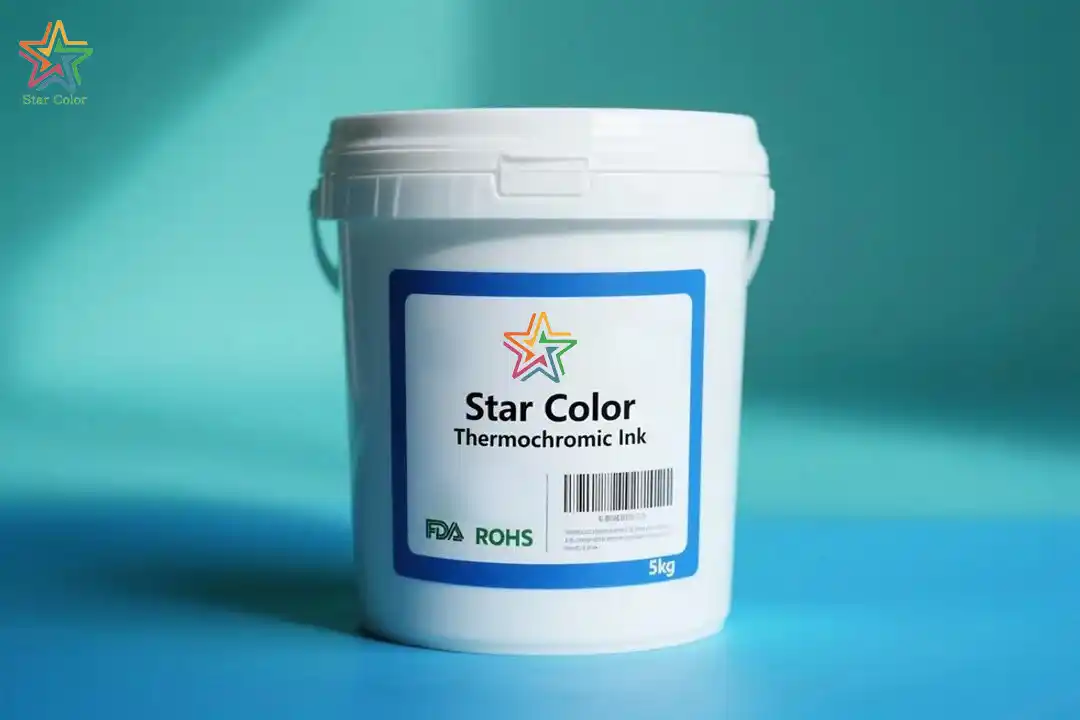Temperature Range of Thermochromic Inks
Date: Jul 03 2025 From: Star Color Views:
Thermochromic inks are innovative materials that change color in response to temperature shifts. They are widely used in packaging, promotional items, smart labels, and security printing. But a critical factor that determines their application scope is the temperature range in which they activate and revert.
I. Thermochromic Mechanisms
1.1 Leuco Dye Systems
Most commercial thermochromic inks use microencapsulated leuco dyes, consisting of three core components:
- Leuco dye: A lactone compound that switches between colored/colorless states.
- Developer: Provides protons to trigger dye color development.
- Solvent: Controls activation temperature via its melting point—above this point, the solvent disrupts the dye-developer bond, causing discoloration.
Example: A 31°C system uses myristyl alcohol (melting point 31°C) as the solvent. Below 31°C, the solvent remains solid, maintaining the colored complex; above 31°C, it melts, dissociating the complex and fading the color.
1.2 Liquid Crystal Systems
Cholesteric liquid crystals change color by adjusting their helical structure with temperature, reflecting different light wavelengths. These offer high precision (±0.5°C) but are costly and stress-sensitive, limiting use to high-end sensors.

II. Temperature Range Classification
| Type |
Activation Range |
Transition Bandwidth |
Key Applications |
| Low-Temperature |
-10°C to 10°C |
±1–2°C |
Frozen food packaging, cold chain labels (e.g., -5°C ice cream indicators) |
| Room-Temperature |
20°C to 35°C |
±2–3°C |
Interactive toys, indoor monitors, temperature-sensitive stickers |
| Body-Temperature |
31°C to 37°C |
±0.5–1°C |
Touch labels, medical fever indicators, hand warmer monitors |
| High-Temperature |
45°C to 70°C |
±3–5°C |
Industrial sterilization indicators, equipment overheat warnings |
| Ultra-High-Temperature |
80°C to 150°C |
±5–8°C |
Fire safety labels, engine temperature monitoring |
Note: The "activation temperature" is the midpoint of the transition, while the "bandwidth" is the interval between start and completion of color change (e.g., a 33°C ink transitions from 31°C to 35°C).
III. Factors Affecting Performance
3.1 Substrate Properties
- Thermal conductivity: Metals/glass accelerate response (<1s), while paper/plastic delay it (2–5s).
- Surface treatment: Low-energy substrates (PP/PE) need corona treatment (>38 dyne/cm) to prevent microcapsule damage.
3.2 Ink Layer Parameters
- Thickness: 5–10μm is optimal. Thinner layers reduce durability; thicker layers broaden transition bandwidth.
- Microcapsule size: 3–8μm diameter balances color density and flexibility.
3.3 Environmental Factors
- UV radiation: Degrades dyes; mitigate with UV absorbers or protective varnishes.
- Humidity: >85% RH causes swelling; use moisture barriers for water-based inks.
- Mechanical stress: Friction risks capsule rupture; apply UV-curable overcoats (hardness >3H) for high-wear uses.
IV. Custom Formulation and Applications
Key Customization Parameters
- Temperature accuracy: ±0.5°C for medical use (e.g., 37°C fever indicators).
- Cycle life: 1,000–5,000 cycles standard; up to 10,000+ with reinforced capsules for industrial sensors.
- Color contrast: ΔE >30 (measured via spectrophotometer) for clear visibility.
Typical Applications
- Cold chain: -3°C inks for frozen goods (red below -3°C, colorless above -1°C).
- Sterilization: 134°C irreversible inks (yellow-to-red) for autoclave validation.
- Beverage packaging: 28°C inks for beer cans (blue to colorless at 8–12°C).
Conclusion
Thermochromic inks’ temperature ranges define their applicability. By aligning mechanisms, substrate compatibility, and environmental protection with specific needs, these inks can effectively serve packaging, medical, and industrial sectors. Advancements in microencapsulation will further expand their durability and functionality.
 RU
RU
 EN
EN
 CN
CN

